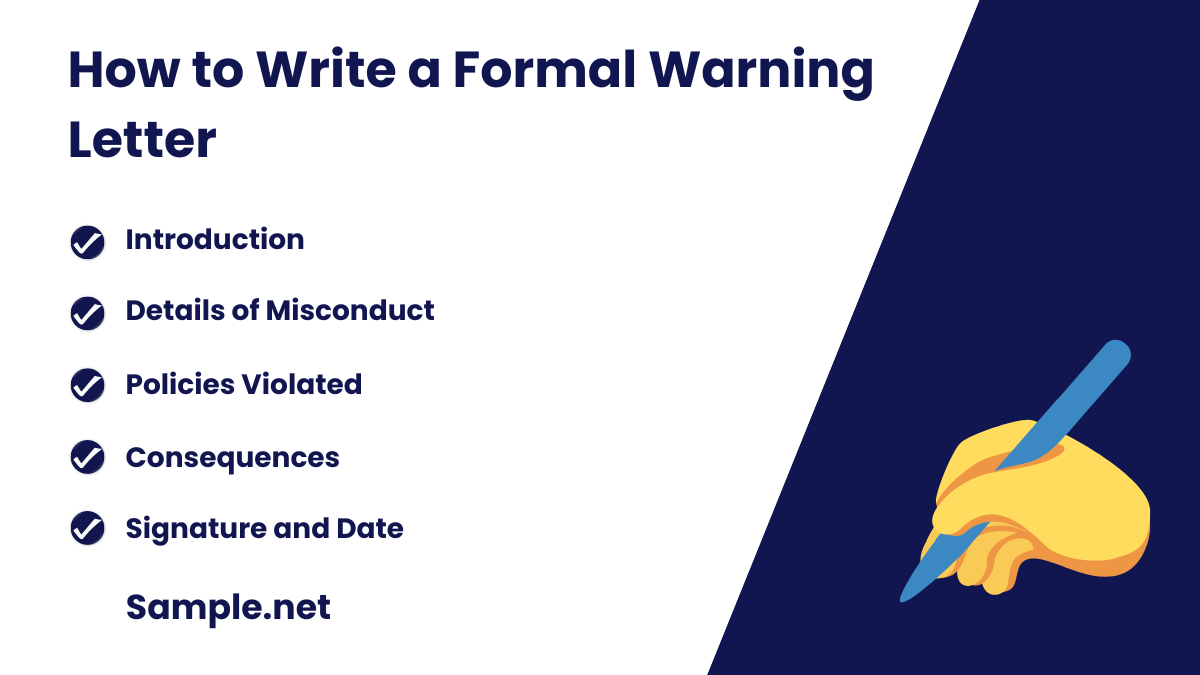Warning Letter Samples
-
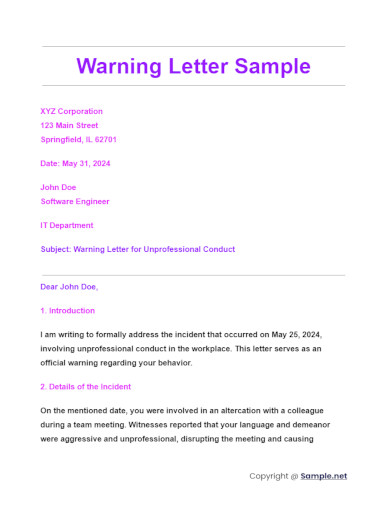
Warning Letter Sample
download now -
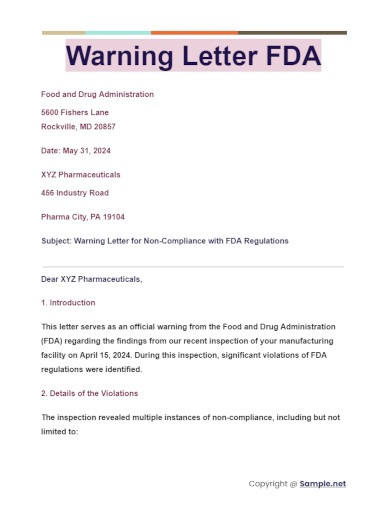
Warning Letter FDA
download now -
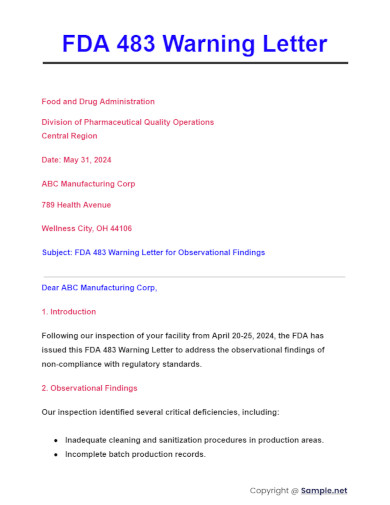
FDA 483 Warning Letter
download now -
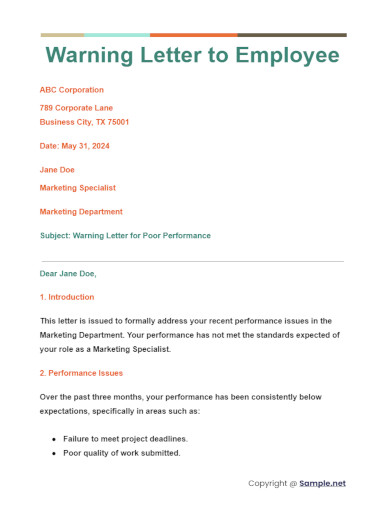
Warning Letter to Employee
download now -
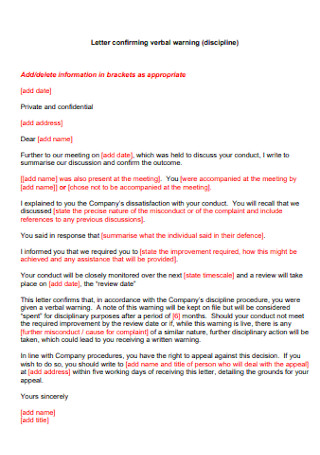
Letter Confirming Verbal Warning
download now -

Performance Deficiency Warning Letter
download now -
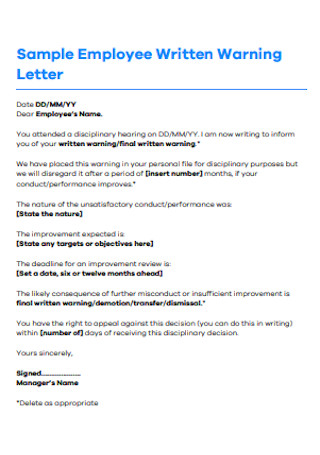
Sample Employee Written Warning Letter
download now -
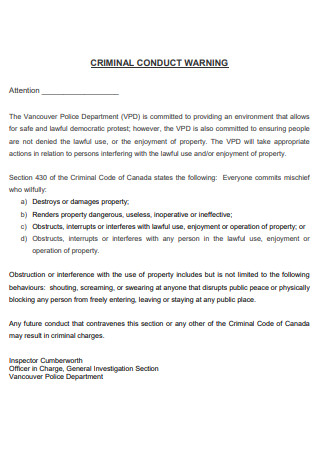
Criminal Conduct Warning Letter
download now -
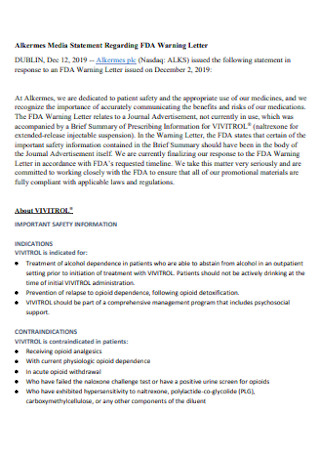
Media Statement Warning Letter
download now -
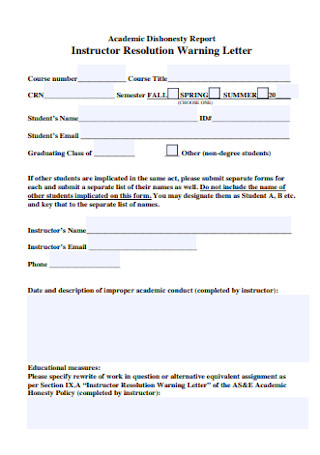
Instructor Resolution Warning Letter
download now -

Final Employee Warning Letter
download now -
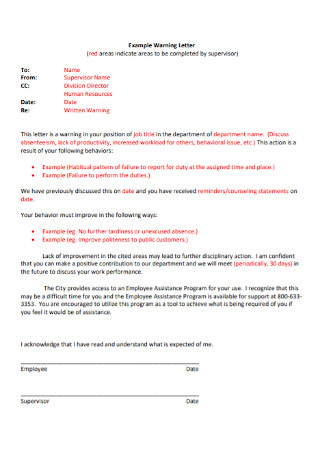
Supervisor Warning Letter
download now -
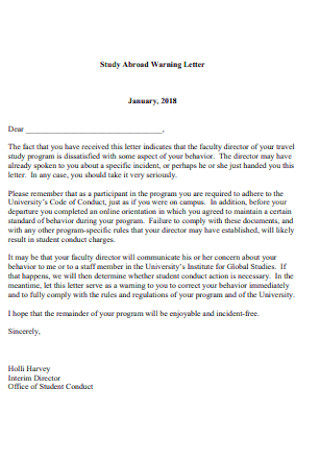
Study Abroad Warning Letter
download now -
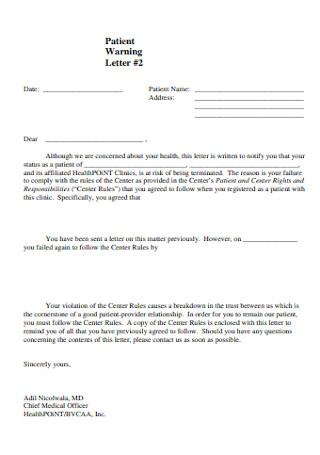
Patient Warning Letter
download now -
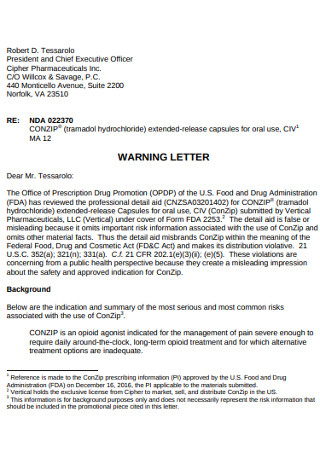
HR Employee Warning Letter
download now -
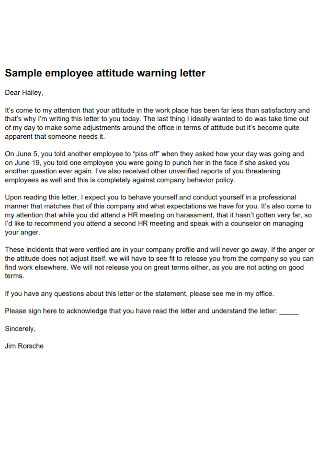
Sample Employee Attitude Warning Letter
download now -
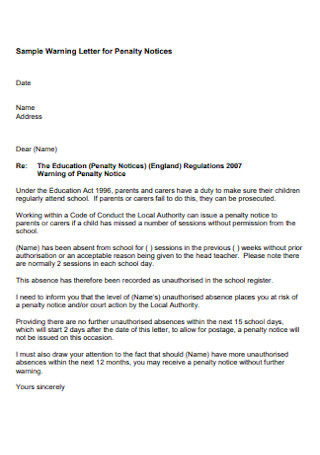
Warning Letter for Penalty Notices
download now -
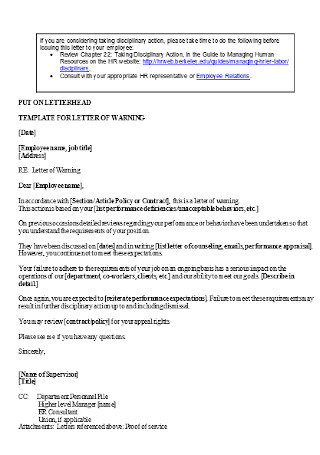
Standard Employee Warning Letter
download now -
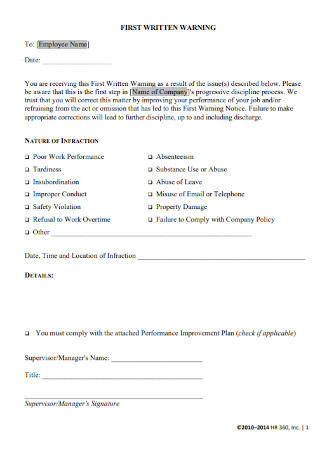
Sample Employee First Warning Letter
download now -
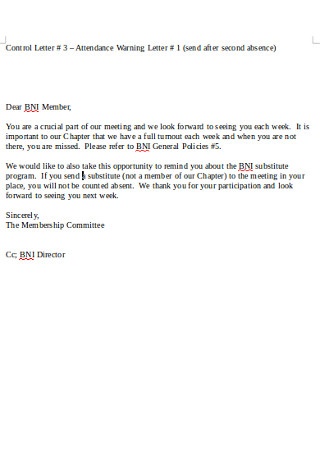
Employee Attendance Warning Letter
download now -
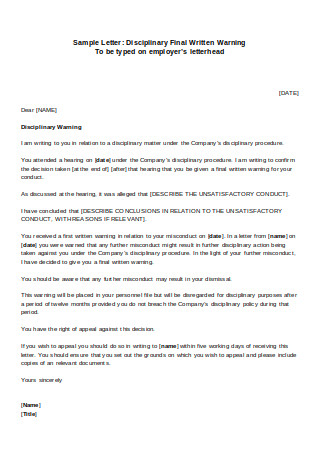
Final Written Warning Letter
download now -

Student Warning Letter
download now -
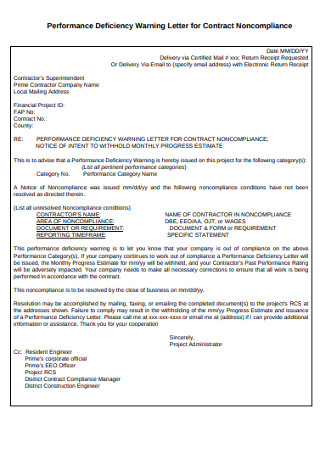
Performance Deficiency Warning Letter
download now -
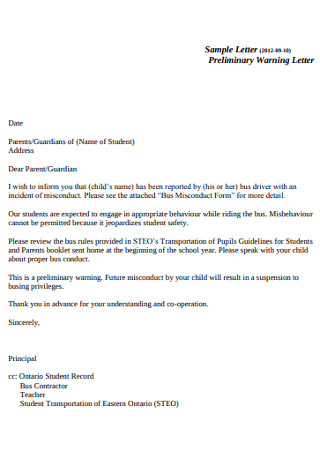
Preliminary Warning Letter
download now -
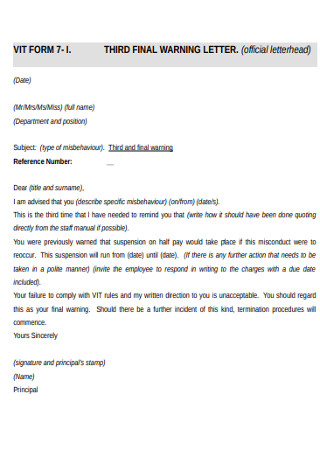
Third Final Warning Letter
download now -
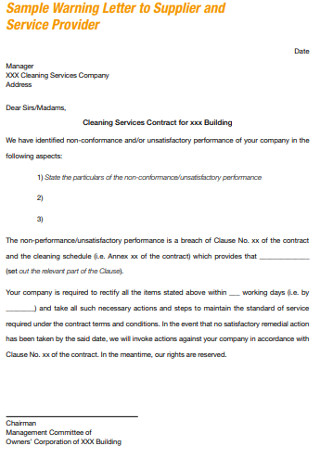
Warning Letter for Supplier
download now -
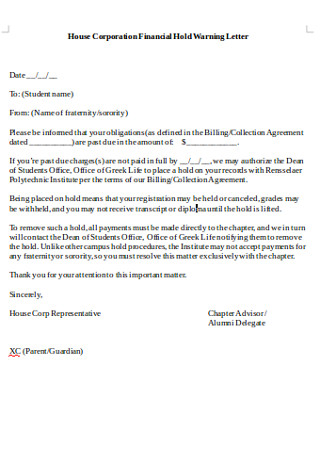
Corporation Financial Warning Letter
download now -
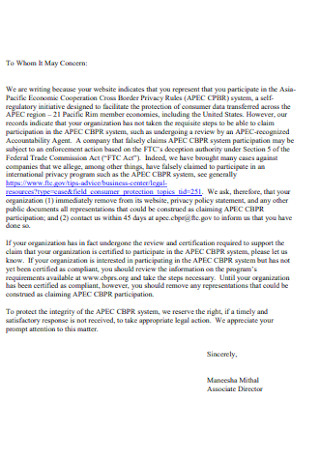
Basic Warning Letter Template
download now -
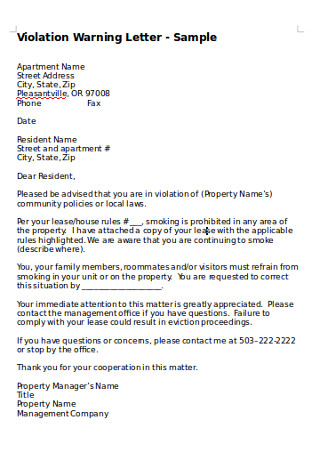
Violation Warning Letter
download now -

Attendance Warning Letter
download now -
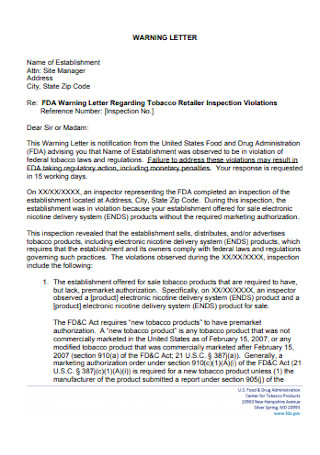
Warning Letter Regarding Tobacco Retailer
download now -
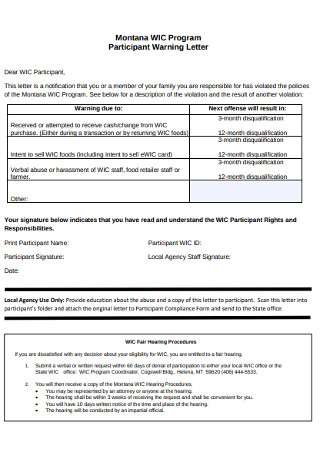
Participant Warning Letter
download now -
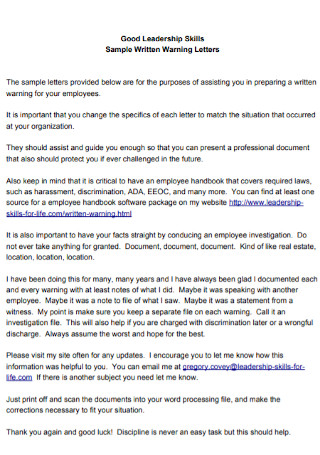
Leadership Warning Letter
download now -
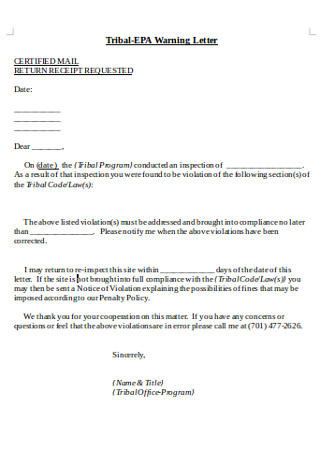
Sample Tribal Warning Letter
download now -
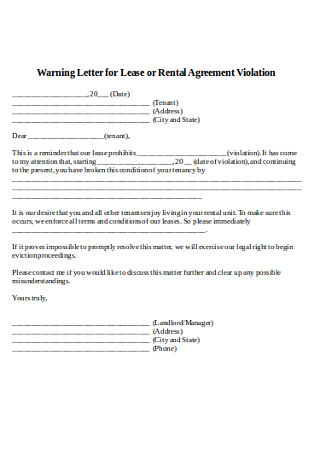
Rental Agreement Warning Letter
download now -
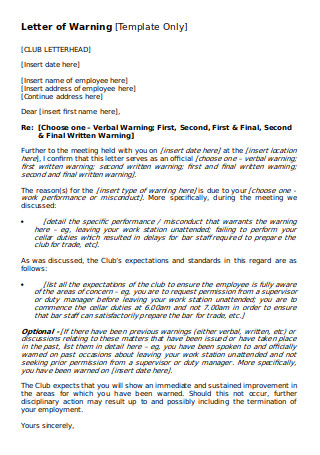
Simple Letter of Warning Example
download now -
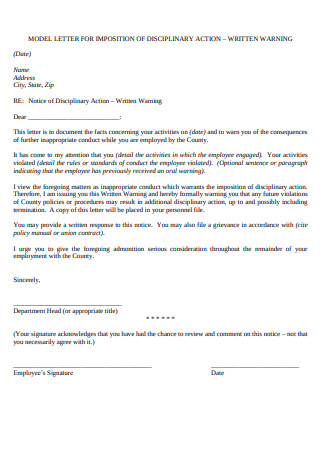
Written Warning Letter
download now -
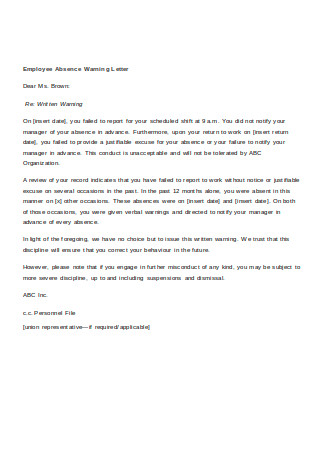
Employee Absence Warning Letter
download now -
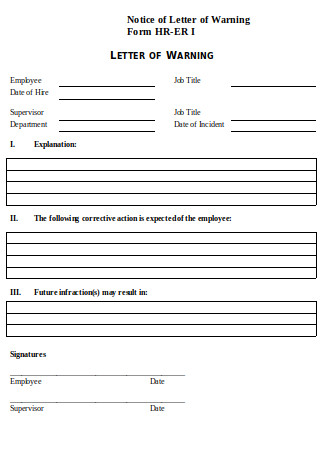
Warning Letter of Notice
download now -
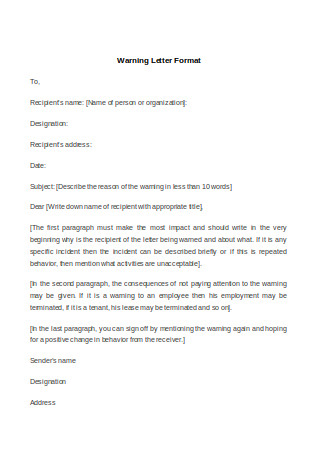
Warning Letter Format
download now
FREE Warning Letter s to Download
Warning Letter Format
Warning Letter Samples
What is a Warning Letter?
The Formal Structure of a Warning Letter
How to Create a Warning Letter
When should you give a warning letter?
What are the common reasons that lead to being given a warning letter?
Is a warning letter necessary?
How to Write a Formal Warning Letter?
What Is a Warning Letter from the FDA?
What Are the Consequences of a Warning Letter?
What Is the Purpose of a Warning Letter?
What Happens When You Get a Written Warning?
What Is a Warning Notice?
How Serious Is a Warning Letter?
How Long Does a Written Warning Last?
How Do I Respond to a Warning Letter?
How Many Warning Letters Before Termination?
Do I Have to Accept a Written Warning?
Can I Reject a Warning Letter?
Download Warning Letter Bundle
Warning Letter Format
Company Name Address City, State, ZIP Code
Date
Employee Name Employee Position Department
Subject: Warning Letter for [Reason]
Dear [Employee Name],
1. Introduction
- State the purpose of the letter.
- Mention the date of the incident(s) and the specific behavior or performance issue.
2. Details of the Incident
- Provide a detailed description of the incident or behavior.
- Reference any previous discussions or warnings related to this issue.
3. Impact of the Incident
- Explain the impact of the behavior on the team, department, or company.
4. Expectations and Consequences
- Clearly state the expected behavior moving forward.
- Outline the consequences of not meeting these expectations.
5. Support and Resources
- Mention any available resources or support to help the employee improve.
6. Conclusion
- Express hope for improvement and reiterate the importance of the expected changes.
Sincerely,
[Manager’s Name] [Manager’s Position] [Department]
What is a Warning Letter?
A Warning Letter is an official document issued by an employer to an employee to address unacceptable behavior or performance issues. It serves as a formal notice highlighting the concerns and outlining the necessary steps for improvement. Clear communication in a warning letter helps maintain workplace standards and provides an opportunity for the employee to rectify the situation.
The Formal Structure of a Warning Letter
Since warning letters are official documents commonly attributed to the workplace, it is only natural there is a formal structure on what to input in the letter. Standard guidelines suggest that professional warning letters consist of nine components. And they are the following:
How to Create a Warning Letter
Making a warning letter isn’t complicated. In fact, you can easily craft them using the sample warning letters showcased above this article. Everything is premade so your only concern is to polish and insert your preferred details. But to ensure your warning letter is effectively made, don’t forget to apply these steps:
Step 1: Review the Problem and What Happened Meticulously
An investigation is crucial before sending a warning letter. First things first, is the problem related to an employee’s attendance, performance, or behavior? Be specific. And what backing evidence do you have that proves an employee actually committed misconduct? Note it down. Talking with the person involved and the witnesses are also recommended for clarification.
Step 2: Be Objective in Writing the Details
Begin drafting your warning letter by writing about the details freely first. Don’t worry about the format, sequence of events, and organization yet because you will do that after the draft. Also, be objective no matter what. Even if you find the employee valuable or if you are close with the person involved, don’t be biased. Call them out so they shall improve next time. Warning letters are not supposed to threaten anyway because you can be friendly in warning them.
Step 3: Set the Warning Letter’s Structure
Can you still remember the formal structure of a warning letter, as previously discussed? Ensure that you have those in your warning letter to complete the document. Each component there is also another way to divide your details. Hence, you can begin formatting and organizing your details now. A tip is to come up with an easy-to-follow structure so whoever reads the letter gets the gist pronto.
Step 4: Finalize All Information and Format
Lastly, decide the final touches from the information and format. For example, review if the spelling, words, and details are correct before actually sending it. Proofreading is key. And for the format, how do you want your warning letter to be? Do you want it printed or sent as an email only? Submit the letter only when you are satisfied with the result.
When should you give a warning letter?
A warning letter is appropriately given if you have already considered a verbal warning yet the person involved still committed the same mistake. Also, you can send it anytime an employee should be warned about something. But for serious offenses, warning letters are imperative.
What are the common reasons that lead to being given a warning letter?
In the workplace, warning letters are necessary if an employee committed the following reasons:
- Failure to meet the job obligations
- Excessive number of late or absence
- Confidentiality policy breach
- Health and safety policy breach
- Alcohol and drug policy breach
- Theft
- Threatening co-workers
Is a warning letter necessary?
Warning letters are necessary when you want to implement disciplinary action towards your business. Issuing warning letters is even a standard HR practice and it will help lessen legal risks, particularly in terminating or firing an employee.
How to Write a Formal Warning Letter?
Writing a formal Warning Letter involves clear, professional communication and adherence to company policies. Key steps include:
- Introduction: Clearly state the purpose of the letter, including the term Confirmation Letter
- Details of Misconduct: Describe the specific behavior or incident that led to the warning.
- Policies Violated: Reference the company policies or rules that were breached.
- Consequences: Outline the potential consequences if the behavior continues.
- Signature and Date: Include the supervisor’s signature and the date for formality.
What Is a Warning Letter from the FDA?
An FDA Warning Letter is an official notification sent to a company regarding regulatory violations. Key elements include:
- Introduction: State the purpose of the warning and the specific violations.
- Details of Violations: Describe the specific infractions identified by the FDA.
- Corrective Actions: Outline required corrective actions to address the violations.
- Deadline: Provide a timeline for when the corrective actions must be completed.
- Consequences: Explain the potential consequences if the violations are not corrected, similar to a Termination Letter.
What Are the Consequences of a Warning Letter?
Receiving a Warning Letter can have several significant consequences. Key points include:
- Reputation Damage: A warning letter can harm an individual’s or company’s reputation.
- Operational Changes: Required changes may disrupt normal operations.
- Increased Scrutiny: Future actions may be closely monitored by authorities.
- Legal Implications: Non-compliance may lead to legal actions or fines.
- Termination Risk: Continued violations can lead to termination of agreements, similar to an Early Lease Termination Letter.
What Is the Purpose of a Warning Letter?
The primary purpose of a Warning Letter is to formally notify an individual or organization of a violation and to outline necessary corrective actions. Key points include:
- Formal Notification: Officially inform the recipient of the issue.
- Documentation: Provide written evidence of the violation and the warning.
- Corrective Actions: Specify actions required to rectify the situation.
- Prevention: Deter future misconduct by outlining consequences.
- Compliance: Ensure adherence to rules and regulations, akin to a Tenant Warning Letter.
What Happens When You Get a Written Warning?
Receiving a written Warning Letter initiates a formal process aimed at correcting behavior or addressing issues. Key steps include:
- Acknowledgment: The recipient must acknowledge receipt of the warning.
- Action Plan: Develop a plan to address and correct the cited issues.
- Monitoring: The behavior or situation will be closely monitored.
- Follow-Up: A follow-up meeting may be scheduled to assess progress.
- Potential Consequences: Failure to improve can lead to further disciplinary actions, including a Lease Termination Letter if applicable.
What Is a Warning Notice?
A Warning Notice is a formal document informing an employee of their misconduct or poor performance, serving as a precursor to potential disciplinary actions like a Termination of Employment Letter.
How Serious Is a Warning Letter?
A Warning Letter is a serious disciplinary action indicating a significant issue that needs immediate correction. Continued violations can lead to more severe consequences, including a Contract Termination Letter.
How Long Does a Written Warning Last?
The duration of a written warning typically lasts six months to a year, depending on company policy. It’s a critical part of Termination Agreement for documenting employee behavior.
How Do I Respond to a Warning Letter?
Respond to a warning letter professionally, acknowledging the issue, providing an explanation if necessary, and outlining steps to improve, similar to addressing issues in a Tenancy Termination Letter.
How Many Warning Letters Before Termination?
The number of warning letters before termination varies by company policy, but typically, two to three warnings may precede a Termination of Contract.
Do I Have to Accept a Written Warning?
You may not agree with a written warning but acknowledging receipt is usually required. Refusal to accept can escalate the situation, potentially leading to a Wrongful Termination Letter.
Can I Reject a Warning Letter?
You cannot typically reject a warning letter. Acknowledging receipt doesn’t mean agreeing with it, and refusal may result in further disciplinary action, such as a Letter of Job Termination.
In conclusion, understanding the importance and structure of a Warning Letter is crucial for maintaining workplace discipline. Our guide on Warning Letter: Sample, Forms, Letters, Use provides detailed insights and practical examples, ensuring you can create effective warning letters for various scenarios. Whether dealing with behavior issues or misconduct, having the right templates and knowledge at your disposal is essential for effective communication and resolution. When drafting a Referral Letter, applying the same principles of clarity and purpose will enhance its effectiveness.


